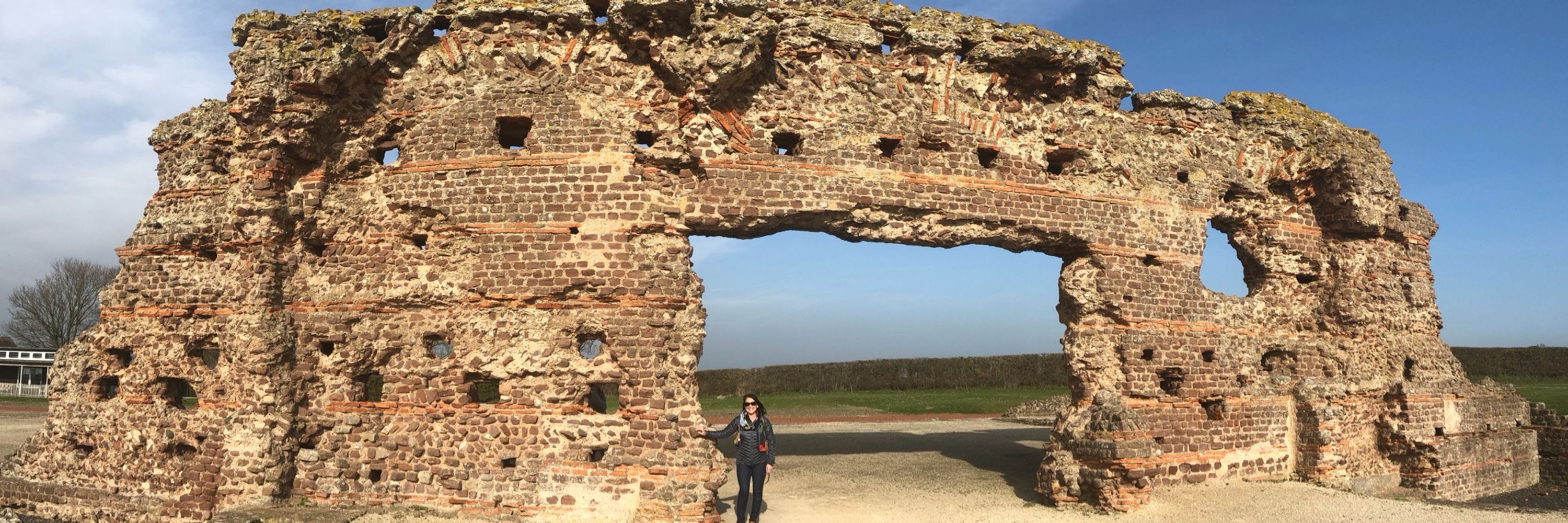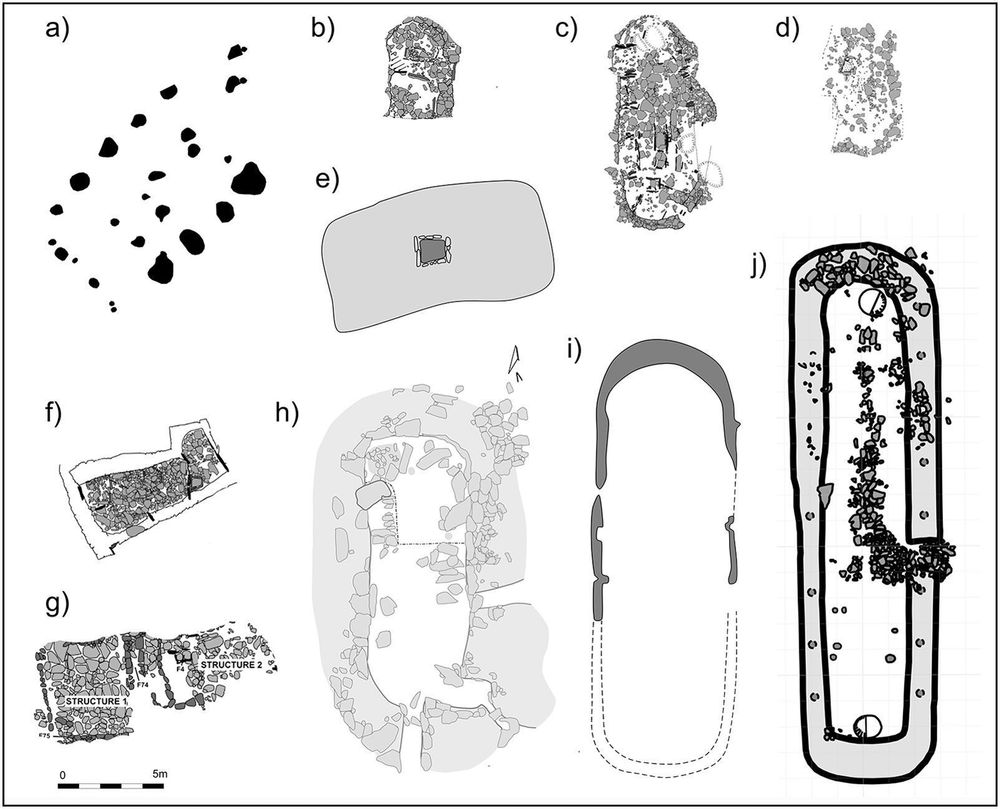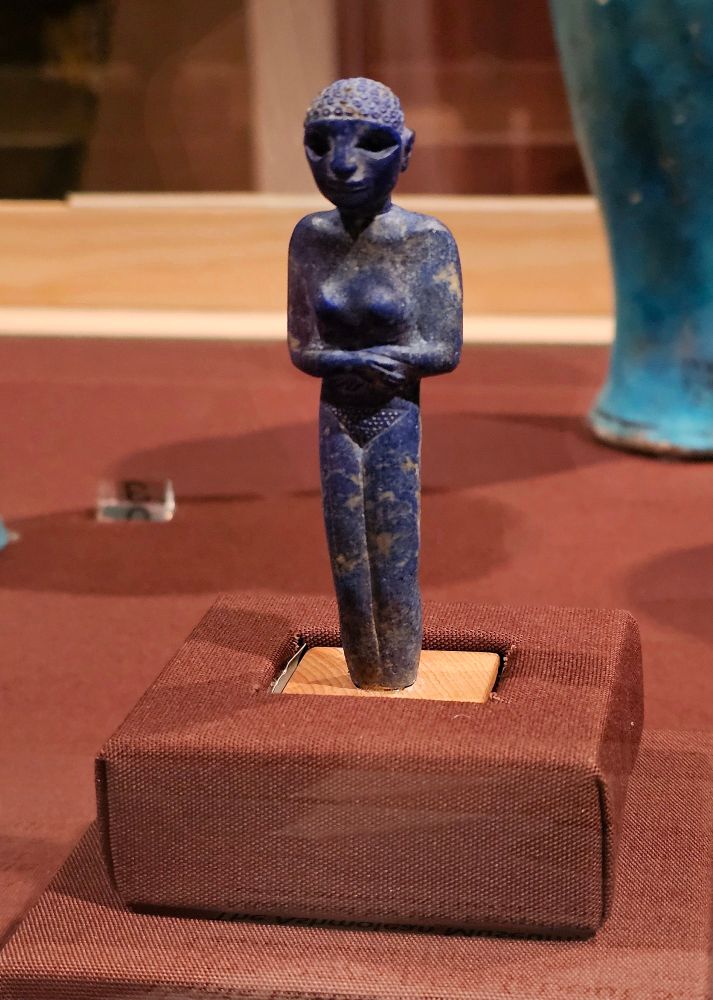
Here to share my love of archaeology.
The artist used a flake of limestone as a sketchpad to draw this comic scene some 3,200 years ago.
📷 Brooklyn Museum www.brooklynmuseum.org/en-GB/object...
#Archaeology

The artist used a flake of limestone as a sketchpad to draw this comic scene some 3,200 years ago.
📷 Brooklyn Museum www.brooklynmuseum.org/en-GB/object...
#Archaeology
#MetMuseum 📸 me

#MetMuseum 📸 me
Excavation and aerial survey suggest the presence of hundreds of roundhouses, indicating a huge prehistoric settlement at the site.
🆓 doi.org/10.15184/aqy...
🏺 #Archaeology

Excavation and aerial survey suggest the presence of hundreds of roundhouses, indicating a huge prehistoric settlement at the site.
🆓 doi.org/10.15184/aqy...
🏺 #Archaeology
Boat from #Herculaneum excavated 1982.
Found with building debris carried to beach in 1st volcanic eruption, overturned by force of violent seas, smashed and buried by pyroclastic flows.
>9m long x 2.2m. Here rudder attachments + planking visible at stern. #Roman #Archaeology 🏺

Boat from #Herculaneum excavated 1982.
Found with building debris carried to beach in 1st volcanic eruption, overturned by force of violent seas, smashed and buried by pyroclastic flows.
>9m long x 2.2m. Here rudder attachments + planking visible at stern. #Roman #Archaeology 🏺

🏺
📷 me

So well preserved it looks like it was woven yesterday rather than some 1,500 years ago!
It’s thought the hood was made for a child. Found in 1867 in a peat bog in St Andrews Parish, Orkney.
National Museum of Scotland
📷 by me
#Archaeology


So well preserved it looks like it was woven yesterday rather than some 1,500 years ago!
It’s thought the hood was made for a child. Found in 1867 in a peat bog in St Andrews Parish, Orkney.
National Museum of Scotland
📷 by me
#Archaeology

So well preserved it looks like it was woven yesterday rather than some 1,500 years ago!
It’s thought the hood was made for a child. Found in 1867 in a peat bog in St Andrews Parish, Orkney.
National Museum of Scotland
📷 by me
#Archaeology
Barpa Langais, Isle Of North Uist is the best preserved Neolithic chambered cairn in the Outer Hebrides. It is typical of tombs built all over the islands by #Neolithic farming communities.
#Archaeology

Barpa Langais, Isle Of North Uist is the best preserved Neolithic chambered cairn in the Outer Hebrides. It is typical of tombs built all over the islands by #Neolithic farming communities.
#Archaeology
🔵 The oldest blue mineral pigment use in Europe
⛰️ Mesoamerican mountain monuments and water worship
🐚 Playing the shell trumpets of Neolithic Catalonia
& much more! 🏺
www.cambridge.org/core/journal...

🔵 The oldest blue mineral pigment use in Europe
⛰️ Mesoamerican mountain monuments and water worship
🐚 Playing the shell trumpets of Neolithic Catalonia
& much more! 🏺
www.cambridge.org/core/journal...
Pair of showy fibulae. Part of the Treasure of Untersiebenbrunn, from an East Germanic (Gepidic) grave discovered in 1910. #Gold plating on silver with inlaid garnet, glass, enamel.
#Archaeology
#Art #History #artwork #Jewellery

Pair of showy fibulae. Part of the Treasure of Untersiebenbrunn, from an East Germanic (Gepidic) grave discovered in 1910. #Gold plating on silver with inlaid garnet, glass, enamel.
#Archaeology
#Art #History #artwork #Jewellery
How Scandinavian culture, technology and lifeways took hold is obscure, but new radiocarbon dates from Orkney show the transition was long and complex.
🆓 doi.org/10.15184/aqy...
🏺 #Archaeology

How Scandinavian culture, technology and lifeways took hold is obscure, but new radiocarbon dates from Orkney show the transition was long and complex.
🆓 doi.org/10.15184/aqy...
🏺 #Archaeology
Antefix fragments with LEG XX & decorated with a boar, symbol of the Twentieth Legion Valeria Victrix.
The museum believes V. V. stood for Valiant and Victorious, probably awarded to the legion after they helped defeat #Boudicca AD61
#Roman #Archaeology
#TilesOnTuesday

Antefix fragments with LEG XX & decorated with a boar, symbol of the Twentieth Legion Valeria Victrix.
The museum believes V. V. stood for Valiant and Victorious, probably awarded to the legion after they helped defeat #Boudicca AD61
#Roman #Archaeology
#TilesOnTuesday
So well preserved it looks like it was woven yesterday rather than some 1,500 years ago!
It’s thought the hood was made for a child. Found in 1867 in a peat bog in St Andrews Parish, Orkney.
National Museum of Scotland
📷 by me
#Archaeology

So well preserved it looks like it was woven yesterday rather than some 1,500 years ago!
It’s thought the hood was made for a child. Found in 1867 in a peat bog in St Andrews Parish, Orkney.
National Museum of Scotland
📷 by me
#Archaeology

5th-4th c. BCE, Tajikistan. 📸 me

5th-4th c. BCE, Tajikistan. 📸 me
Western Greek, from Cumae. 200-100 BCE. #BritishMuseum

Western Greek, from Cumae. 200-100 BCE. #BritishMuseum


Centuries later, the tile has made it into a museum: not because of an emperor, but thanks to one dog who accidentally walked his way into history.🧵1/2
📷me

Centuries later, the tile has made it into a museum: not because of an emperor, but thanks to one dog who accidentally walked his way into history.🧵1/2
📷me
The world’s oldest known sculpture of a horse!
This tiny figurine was carved from mammoth ivory by an Ice Age artist some 40,000 years ago!
📷 by me
#Archaeology

The world’s oldest known sculpture of a horse!
This tiny figurine was carved from mammoth ivory by an Ice Age artist some 40,000 years ago!
📷 by me
#Archaeology
The world’s oldest known sculpture of a horse!
This tiny figurine was carved from mammoth ivory by an Ice Age artist some 40,000 years ago!
📷 by me
#Archaeology

But based on the pose she was probably carved in Mesopotamia
Buuuut she's made from Lapis Lazuli from Afghanistan!
Quite a journey!
#archaeology #photooftheday
📍Seen in the Fitzwilliam museum in Cambridge🏺

But based on the pose she was probably carved in Mesopotamia
Buuuut she's made from Lapis Lazuli from Afghanistan!
Quite a journey!
#archaeology #photooftheday
📍Seen in the Fitzwilliam museum in Cambridge🏺
#RomanSiteSaturday #AncientRome #Archaeology
📸 my own, October 2025.



#RomanSiteSaturday #AncientRome #Archaeology
📸 my own, October 2025.

